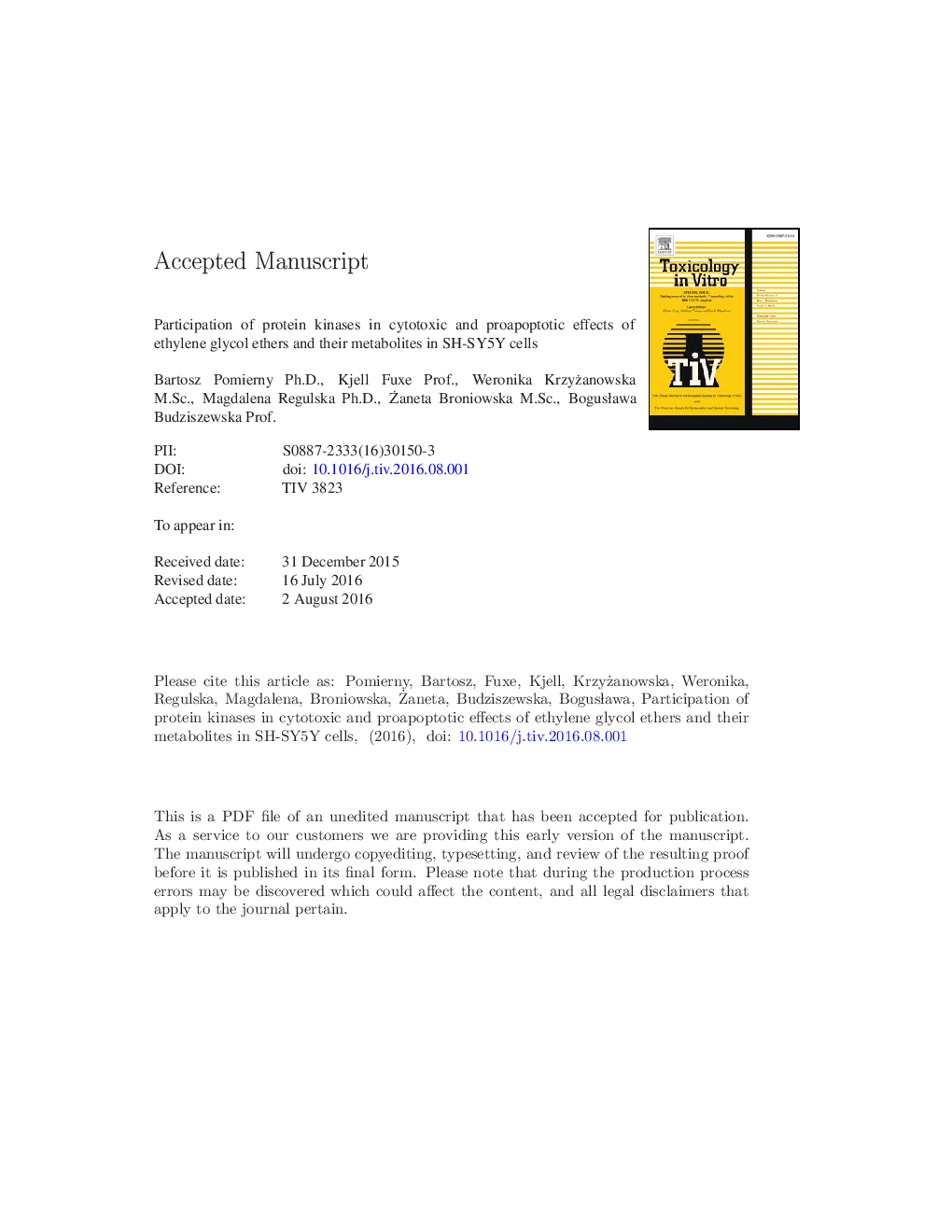| Article ID | Journal | Published Year | Pages | File Type |
|---|---|---|---|---|
| 5861149 | Toxicology in Vitro | 2016 | 35 Pages |
Abstract
Ethylene glycol ethers (EGEs) are compounds widely used in many branches of industry. Their toxicological profile in the peripheral tissues is relatively well described, but little is known about their action on the central nervous system (CNS). In this study, we evaluated the effect of 2-ethoxyethanol (EE), 2-butoxyethanol (BE), 2-phenoxyethanol (PHE) and their metabolites on necrotic (estimated by cell viability and lactate dehydrogenase release) and apoptotic (caspase-3 activity and mitochondrial membrane potential) processes and reactive oxygen species' (ROS) production in human neuroblastoma (SH-SY5Y) cells. We have shown that, similar to the peripheral tissues, EGE metabolites in most of the performed assays revealed greater potential to damage than the parent compounds in the CNS cells. Subsequently, we investigated the participation of some selected protein kinases in the degenerative activity of PHE and its main metabolite, phenoxyacetic acid (PHA). It has been found that a GSK3β inhibitor weakened the damaging effects of PHE and PHA in each of the performed assays. Furthermore, the kinases, p38-MAPK, JNK-MAPK and PKC, had a significant role in the cytotoxic and proapoptotic effects of PHA. These results indicate that the neurotoxic effect of EGEs may stem from their impact on many intracellular signal transduction pathways.
Keywords
Related Topics
Life Sciences
Environmental Science
Health, Toxicology and Mutagenesis
Authors
Bartosz Ph.D., Kjell Prof., Weronika M.Sc., Magdalena Ph.D., Å»aneta M.Sc., BogusÅawa Prof.,
